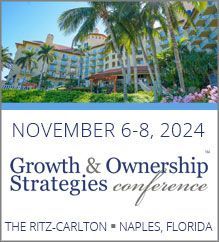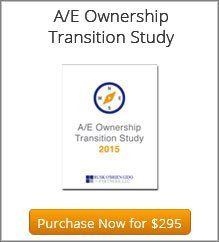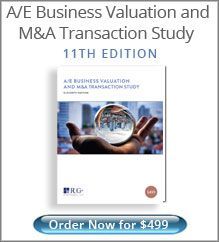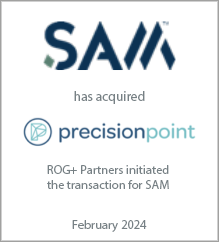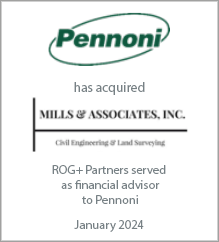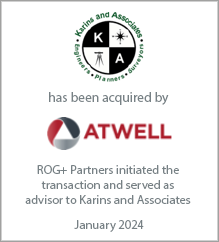Carl specializes in corporate financial advisory services including strategic business planning, financing strategies, operational effectiveness, ownership transition, business valuations, mergers and acquisitions, stock structuring, corporate governance and profit enhancement. He leads ROG’s West Coast office and brings the unique perspective of a past business owner to ROG’s team.
Want to Increase Value for your Firm? Pull these Levers!
Want to Increase Value for your Firm? Pull these Levers!
March 5, 2019
As advisors to design professionals, we are often asked by owners and key executives, “How can I make my firm more valuable?” While value is in the eye of the beholder, there are some things you can do to make your firm more valuable to whomever you eventually transition your firm, whether that transition is an internal or external one. At Rusk O’Brien Gido + Partners, we call these things “value levers” because the more focus and action you place on them (pressure), the more you drive up the value of your firm.
Architects and Engineers must have a process to acquire work, do the work efficiently, and get paid. And that work must be of sufficient quality and must be delivered with excellent service to your clients. Many firms make the mistake of thinking that putting in this “ante” is all that is required to create value. While doing this will get you in the game and create average value, to create exceptional value (and get paid for it in a transition), you will need to incorporate into the culture of your firm the value levers I outline below.
Simply put, firms with exceptional value are those that are scalable, profitable, and have longevity. Let’s define those terms and look at the value levers that drive them. Please note that the value levers of a particular category can also be a value driver in the other two.
Scalability: the ability of an organization to increase its relative production capacity to respond to present and future economic conditions proactively. Investors place a value premium on firms that can show solid and stable growth. Exceptionally valuable firms demonstrate the ability to grow revenues in times of economic expansion and increase market share in times of economic contraction. Here are just a few value levers you can use to drive scalability:
Architects and Engineers must have a process to acquire work, do the work efficiently, and get paid. And that work must be of sufficient quality and must be delivered with excellent service to your clients. Many firms make the mistake of thinking that putting in this “ante” is all that is required to create value. While doing this will get you in the game and create average value, to create exceptional value (and get paid for it in a transition), you will need to incorporate into the culture of your firm the value levers I outline below.
Simply put, firms with exceptional value are those that are scalable, profitable, and have longevity. Let’s define those terms and look at the value levers that drive them. Please note that the value levers of a particular category can also be a value driver in the other two.
Scalability: the ability of an organization to increase its relative production capacity to respond to present and future economic conditions proactively. Investors place a value premium on firms that can show solid and stable growth. Exceptionally valuable firms demonstrate the ability to grow revenues in times of economic expansion and increase market share in times of economic contraction. Here are just a few value levers you can use to drive scalability:
- Bullpen – make sure you have a list of people you can hire if the need arises. Identify who they are, where they are, and how you can get them. This list should always be current.
- Marketing – too often, firms market only when they need the work. This practice, however, just replaces the completed work and often results in a “sawtooth” picture of revenue where one period looks great and the next not so good.
- Project Management Capacity – growth has put more firms out of business than lack of work. Why? Because, often, the existing management structure is incapable of managing the increased workload. As a result, the risk of mistakes increases, profitability and quality of work suffer, and invoices go uncollected. Confirm you have the systems, processes, and people that can handle increased business without sacrificing quality and profitability.
- Credit Capacity – growth sucks up cash. Make sure you have the funds to fuel this growth which can be existing cash, the ability to temporarily draw on a line of credit or take out a loan. And, collect your receivables promptly.
Profitability: the ability of an organization to consistently and predictably generate a return to its investors of time and money. Would you rather invest in a firm that had profitability one year of 5%, then 35% the next, and then back down to 10%? Or would you instead invest in one that achieved 16% to 17% consistently? On average, over the three years, they are both achieving roughly the same profitability, but one has considerably more risk and the other shows consistency and stability. Here are some value levers you can use to get consistently better returns for your firm:
Of course, we’ve only scratched the surface on the ways to make your firm more valuable. There are many value levers that you can use, depending on your situation. The important thing is that you begin to use these levers intentionally to increase value for you or the next owner. Hopefully, this helps, and if you would like to discuss or further explore how you can increase the value of your firm, please give me a call. You can also find me at our one-day Ownership Transition Strategies for A/E Firm Leaders Seminar in May.
- Timely and Accurate Financial Reporting – better decisions equal better results. You can only make better decisions if you have the information to base them on. Your financial reports should provide you with the data that you need to evaluate prior to making decisions and taking corrective action. In this regard, they must be simple, concise and actionable. Furthermore, they must be accrual-based as the cash-basis format is by nature not timely nor accurate.
- Processes for Reducing Risk and Increasing Efficiency – as an owner and leader, you should be relentlessly and mercilessly driving unnecessary risk and inefficiency out of your organization. One of the best ways to do this is by developing processes and systems that can be repeated with accuracy and simplicity and that are not dependent on certain personnel.
- Pricing – increase your prices. There is no greater or easier way to increase profitability than by raising prices. Any increase in price drops straight to the bottom line without any additional cost associated with it. Almost every business in the world raises its prices – because costs go up, like your cost of labor. You give raises and bonuses – so you need to pass along that increased cost to your clients or face the dreaded margin squeeze. When is the last time you raised your prices?
- Bench Strength – organizations with a team of capable leaders are more valuable than ones in which one person holds all the knowledge, client relationships, and rain-making capabilities. By being the center of power and control in their firms, owners create more risk and drive down the value of their firm by limiting the longevity of the firm to their own tenure at the helm. Whether external or internal, buyers like to know that the firm can survive the departure of the current leaders, as it takes time to recoup their investment and make a profit.
- Diversification – in the pursuit of revenue and “that big project,” it can be quite tempting to allow revenue to concentrate in a single client or client type. However, the risk profile of such a scenario will deter most investors, and rightly so. In small companies that are just starting, it is very likely that concentrations will occur. But whether you are a new or an established firm, you should focus on growth in new clients and project types that increase your diversification and not your concentrations. A good rule of thumb is that no more than 15% of your revenue should come from a single client or client type.
Of course, we’ve only scratched the surface on the ways to make your firm more valuable. There are many value levers that you can use, depending on your situation. The important thing is that you begin to use these levers intentionally to increase value for you or the next owner. Hopefully, this helps, and if you would like to discuss or further explore how you can increase the value of your firm, please give me a call. You can also find me at our one-day Ownership Transition Strategies for A/E Firm Leaders Seminar in May.
Latest Perspective
Perfecting the A/E Exit Strategy – Five Key Factors
An enormous A/E generation that kicked off their careers in the 1980s and subsequently started firms or became owners in the 1990s ...
© 2024
Rusk O'Brien Gido + Partners, LLC
Financial Experts for Architects, Engineers, and Environmental Consulting Firms


